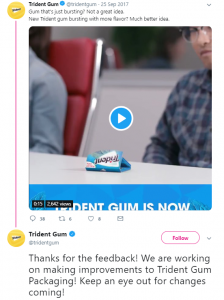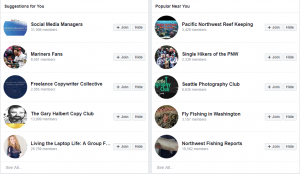Contributor Erik Matlick suggests new ways of thinking about data and technology that will characterize B2B marketing next year and beyond.

The lull between Christmas and New Year’s is traditionally a time for looking back at the best practices (and missteps) of the year gone by, in the hopes of getting a jump on the trends that will dominate the coming year. For B2B marketers, 2017 will be about three Cs: Consolidation, Convergence and the Collective.
Consolidation of vendors and dashboards
2016 might best be described as the year Account-Based Marketing (ABM) took over B2B marketing. While the basic principles of ABM are not new, ad tech and martech providers worked hard in 2016 to make the process of finding, nurturing and continuing to engage with a select group of prospects more streamlined and efficient.
The focus on ABM will continue in 2017 — but the explosion of so-called ABM vendors will not. In fact, there will likely be consolidation, since marketers want fewer dashboards and products to buy and integrate. ABM and other martech solution providers will need to make sure their data can be activated through the most widely adopted tools — think mainstays like Salesforce, Marketo and Eloqua — if they want user adoption.
Convergence leading to new benchmarks for sales and marketing
The growth of ABM is indicative of a broader trend: the continued (and necessary) convergence of sales and marketing. For ABM to work, sales and marketing teams must collaborate more closely and purposefully than they have in the past. In many cases, that will mean using common data sets and working with shared revenue goals.
This more purposeful convergence will lead to the widespread adoption of new B2B performance benchmarks. Plenty of “thought leaders” predicted the death of the marketing-qualified lead (MQL) in 2016 — but there weren’t many suggestions for the benchmarks that should replace it.
While the shift to ABM means marketers are increasingly developing their own business-specific metrics, in 2017, the unifying theme will be the adoption of hybrid sales and marketing benchmarks that clearly map back to revenue goals, according to an agreed-upon timeline.
Based on analysis of how thousands of companies across verticals like finance, healthcare and IT leveraged B2B intent data from Bombora (my employer) in 2016, the top contenders for these new performance benchmarks include:
- level of brand exposure to target accounts
- campaign view-throughs by target account
- level of engagement by target account
- lift in overall opportunity across target accounts
A data ‘collective’ for the benefit of all
This idea of convergence flows into the biggest trend that will affect B2B marketers in 2017, and that’s a shift in thinking around data — from walled gardens and “ownership” to the idea of collectives and data access.
Digital publishers have worked to pool their resources in various iterations for years, always with the goal of enticing advertisers with scale and audience access they can’t get elsewhere. But with the exception of business-interest giants like Forbes, most of these publisher groups have focused on the B2C market.
In 2017, we’ll see the emergence of more B2B-focused data collectives, but they won’t just aggregate data from “traditional” publishers. Instead, B2B marketers will be able to act on data from sources as diverse as industry analysts, CRM platforms, and even vertical-specific vendors. Everyone’s a publisher now, and traditional publishers are still a great source, but 2017 is the year that other sources become viable through these new collectives.
Data standardization to promote interconnectedness
Lastly, 2017 is the year that we’ll see concrete efforts to develop a “Universal ID,” or standard for identifying audiences across the industry. The fact that all the websites, data platforms and big “walled gardens” of tech mega-giants each use different IDs to build audience profiles is a serious problem for marketers.
It’s becoming a bigger issue, and while it affects both B2B and B2C marketers, the budgets that really fund the development of this standard will come from B2B next year.
Some opinions expressed in this article may be those of a guest author and not necessarily Marketing Land. Staff authors are listed here.
Marketing Land – Internet Marketing News, Strategies & Tips
(52)
Report Post








